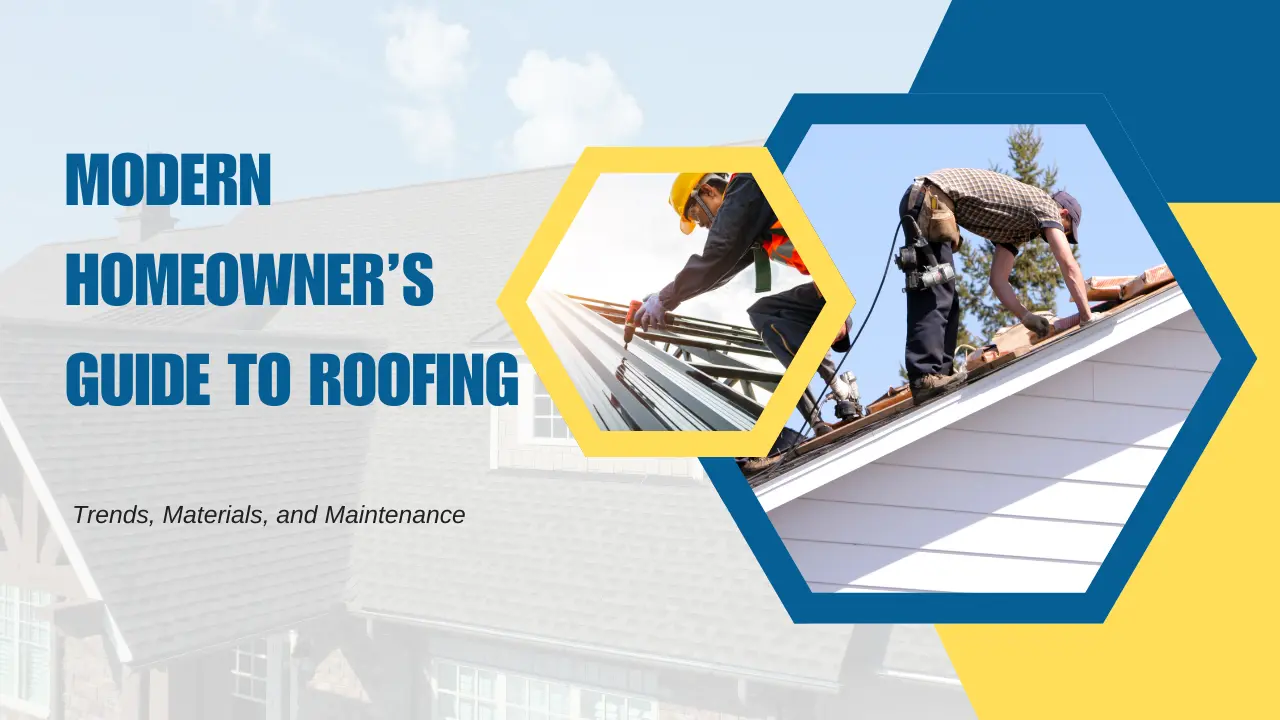The Modern Homeowner’s Guide to Roofing: Trends, Materials, and Maintenance

As homeownership continues to be a cornerstone of personal achievement and security, the importance of a well-maintained roof cannot be overstated. Beyond its fundamental role in sheltering occupants from the elements, a roof is also a defining feature of a property’s curb appeal and long-term value.
With innovations in materials, installation techniques, and sustainability practices, the landscape of residential roofing is evolving rapidly. For homeowners seeking long-term protection and value, understanding the nuances of residential roofing can be essential to making informed decisions about their property’s upkeep.
The Evolution of Residential Roofing
From Function to Form
Historically, roofing was a matter of necessity, with choices dictated by regional availability of materials and basic weatherproofing needs. Today, the roof is as much about aesthetics and energy efficiency as it is about function. Homeowners are increasingly looking for roofing solutions that blend seamlessly with modern architectural styles while offering advanced performance benefits.
Innovations in Materials
The traditional asphalt shingle remains a staple, but the market now offers a diverse array of options. Metal roofing, clay and concrete tiles, and composite shingles are gaining popularity due to their durability and design versatility. Each material brings unique advantages—metal for its longevity and fire resistance, tile for its classic look and thermal properties, and composite for its lightweight nature and ease of installation.
Sustainability and Green Roofing
The push for sustainable living has extended to the rooftop. Cool roofs, which reflect more sunlight and absorb less heat, are helping homeowners reduce energy consumption. Green roofs, featuring vegetation layers, not only improve insulation but also contribute to urban biodiversity and stormwater management. These advancements underscore a broader shift toward environmentally responsible home improvement.
Key Considerations in Roofing Selection
Climate and Environmental Demands
Selecting the right roofing material begins with an honest assessment of local climate. In regions with heavy snowfall, steeply pitched roofs and materials that shed snow easily are preferred. In hurricane-prone areas, impact-resistant shingles and secure fastening systems are critical. UV exposure, wind, rain, and even local wildlife can all influence the optimal roofing solution.
Longevity and Maintenance
The expected lifespan of roofing materials varies widely. Asphalt shingles typically last 15 to 30 years, while metal and tile options can endure for 50 years or more. However, longevity is closely tied to maintenance. Routine inspections, prompt repairs, and proper cleaning can extend the life of any roof, saving homeowners significant costs over time.
Aesthetics and Architectural Compatibility
A roof should complement the style of the home. Modern minimalist homes may benefit from the clean lines of standing seam metal roofing, while Mediterranean or Spanish-style houses often call for clay or concrete tiles. Color, texture, and profile all play a role in achieving a harmonious exterior.
Installation: What Homeowners Need to Know
Professional Versus DIY
While some home repairs lend themselves to DIY approaches, roofing is rarely one of them. The risks of improper installation—ranging from leaks and water damage to voided warranties—far outweigh the perceived savings. Professional installation ensures compliance with building codes, proper ventilation, and the use of high-quality materials.
The Role of Underlayment and Ventilation
Beneath the visible roofing material lies the underlayment, a critical barrier against moisture intrusion. Choices include felt, synthetic, and rubberized asphalt underlayments, each with specific benefits. Proper attic ventilation is equally important, preventing heat buildup in summer and moisture accumulation in winter, both of which can compromise roof integrity.
Cost Factors
Roofing costs are influenced by material choice, roof complexity, labor rates, and regional factors. While initial price is a key consideration, homeowners should also factor in long-term maintenance, energy efficiency, and potential insurance savings when evaluating their investment.
Maintenance Strategies for Longevity
Regular Inspections
Annual roof inspections—ideally in spring and fall—can identify minor issues before they escalate. Key areas to monitor include flashing, gutters, downspouts, and areas around chimneys or skylights. Early detection of cracked, curled, or missing shingles allows for prompt repairs that prevent water infiltration.
Cleaning and Debris Removal
Leaves, branches, and moss can accumulate on rooftops, leading to moisture retention and eventual decay. Cleaning gutters and removing debris from the roof surface not only preserves the material but also ensures proper water drainage away from the foundation.
Addressing Storm Damage
Severe weather can inflict immediate and sometimes hidden damage. After storms, homeowners should look for signs of impact, such as dented metal, missing shingles, or granule loss. Prompt attention to storm-related issues can prevent secondary problems like mold growth or structural deterioration.
Roofing Trends Shaping the Future
Smart Roofing Technologies
The integration of technology into roofing is on the rise. Solar shingles, which generate electricity while serving as a weatherproof barrier, are gaining traction among eco-conscious homeowners. Smart sensors embedded in roofing systems can monitor moisture levels and alert homeowners to potential leaks before they become serious.
Energy Efficiency and Insulation
Increasingly stringent building codes and rising energy costs are driving demand for roofs that contribute to overall home efficiency. Cool roofs, radiant barriers, and high-performance insulation are now standard considerations in new construction and major renovations.
Design Customization
Advances in manufacturing allow for greater customization in color, texture, and shape. Homeowners can now achieve the look of slate or wood shakes with lightweight, durable composites, expanding the design possibilities without compromising performance.
Navigating Roofing Warranties and Insurance
Understanding Warranty Coverage
Roofing warranties typically cover materials, workmanship, or both. Manufacturer warranties may last 20 years or more, but often require regular maintenance and professional installation to remain valid. Homeowners should scrutinize warranty terms and keep detailed records of inspections and repairs.
Insurance Considerations
Homeowners’ insurance policies generally cover roof damage resulting from sudden events like storms or fire, but not from neglect or wear and tear. Understanding policy exclusions and working with reputable contractors can streamline the claims process and ensure adequate protection.
The Value of Informed Decision-Making
A well-chosen and properly maintained roof is an investment in comfort, safety, and property value. As roofing materials and technologies continue to evolve, homeowners are empowered with more options than ever before. By staying informed about trends, maintenance best practices, and the importance of professional installation, individuals can safeguard their homes for decades to come.











